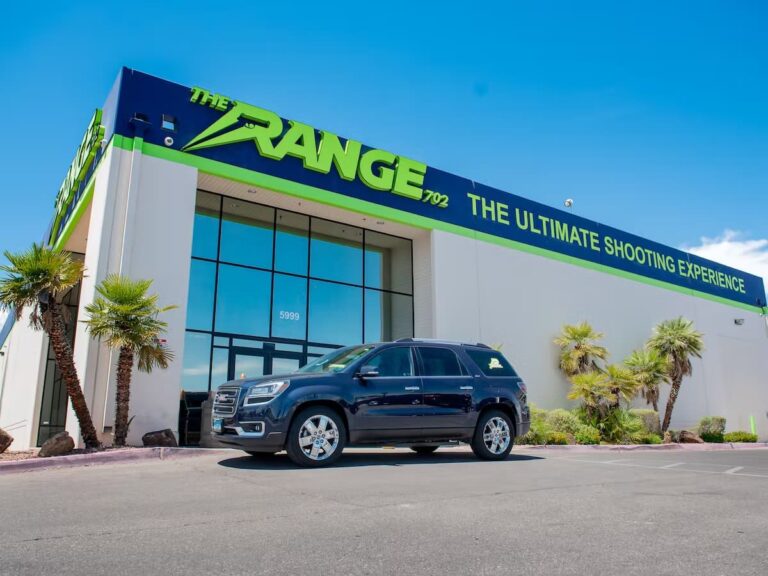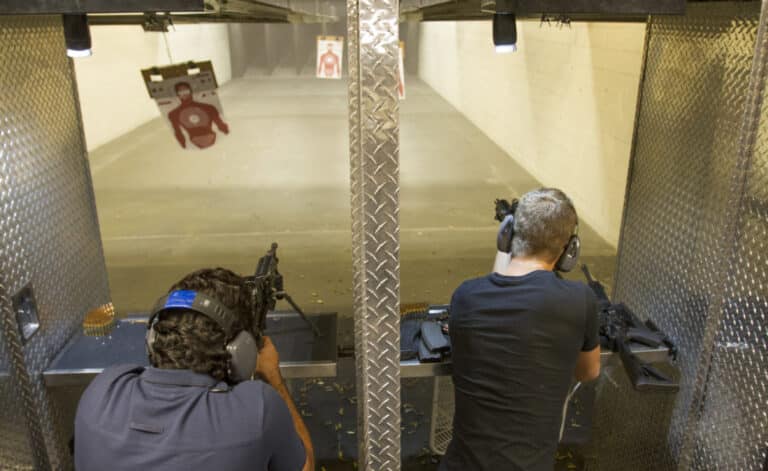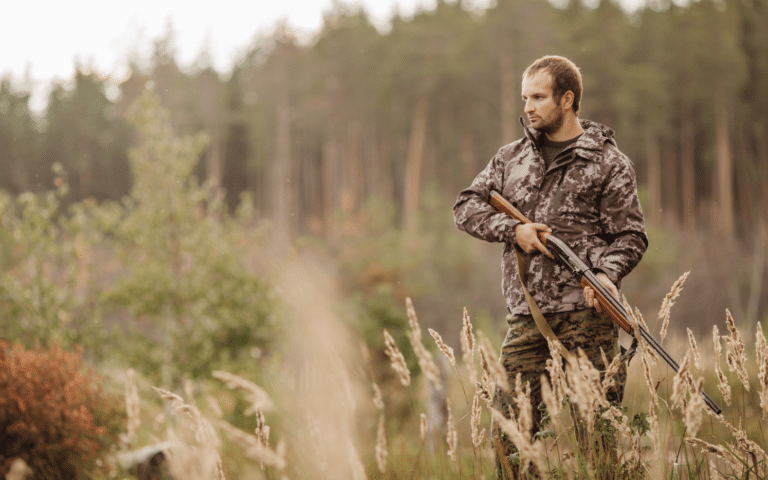How to Pack a Range Bag
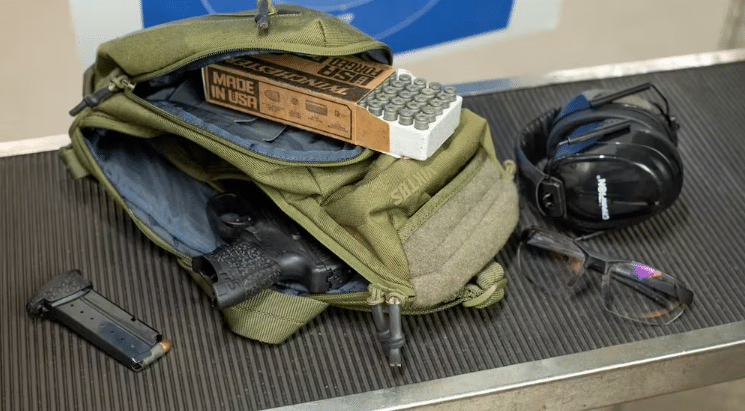
You want to go out shooting and headed to your favorite shooting range.
You have a gun and ammo. All set, right? Not quite.
You need gear (in addition to the gun and ammo) and a bag to carry it. Your equipment and bag are personal — just as individual as your gun, ammo, and holster.
You know your firearm and cool gun gadgets suit you but may not work for your friend. The same goes for your kit: Your gear and organizational style may not be right for someone else. And your needs may differ from one shooting session to another.
Plinking in the woods, hunting, target shooting, training, and competition shooting require different preparations.
However, there are a few essential qualifications for any range bag, some items that every shooter should always include, and some good organizational advice for anyone in any shooting situation. Here’s how to pick a range bag and gear and organize it.
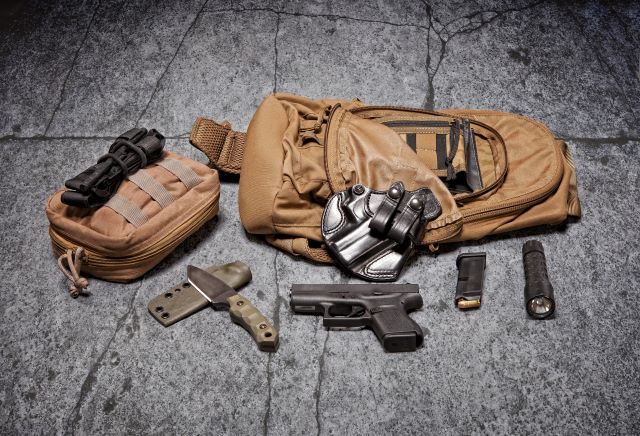
Choose Your Range Bag
A run-of-the-mill duffel bag or backpack will not do. You need a purpose-built range bag.
The best range bag is durable, strong enough to bear your gear’s weight, water-resistant, and spacious enough to hold everything. It has at least one large, central pocket, several small pockets, and a shoulder strap. Your bag should have pockets for specific equipment: a pocket for a pair of goggles, a small compartment for earplugs, and a pocket with elastic magazine bands.
Choose Your Gear
Some equipment is essential: Every shooter needs it every trip to the range. Some gear is useful for a specific kind of shooting. Some equipment is a luxury: You may want it, but you won’t need it.
Essentials
What is a gun range essential? It is a piece of equipment for any shooting range (indoor or outdoor) and any kind of shooting: recreational target shooting, plinking, hunting, training, or competition shooting.
- Eye protection (goggles). Impact-resistant lenses are a plus.
- Ear protection (plugs, muffs, or electronic earmuffs).
- Targets (we provide them at The Range 702)
- Masking tape (or a stapler with staples) to affix targets.
- A safe way to transport ammo — the safest way to bring ammo to the range is stored in ammo boxes with individual compartments to keep the cartridges apart.
- An E.P.I.K. (stands for Emergency Personal Injury Kit). It’s the same thing as a first aid kit or trauma kit.
Useful, but not Essential
These are items that you may need, depending on where you are shooting or your goals. Some are not necessary for an indoor range but are for shooting outdoors. You’ll need some for hunting, but not plinking. Others for competition shooting or training, but not recreational shooting.
- A tool kit
- Sunblock
- Insect repellant
- Binoculars
- Chamber flags
- Cleaning kit
- Dummy rounds for drills
- Flashlight
- Gun oil
- Gloves
- Multi-tool
- Range timer
- A towel to wipe your gun after shooting
- A cleaning rod to dislodge squibs or stuck cartridge cases
- An empty trash bag to protect your bag and gear from rain or mud
- Water
- Snacks
- Extra batteries for electronic devices
- A sharpie or pen for marking shot groups
- A shooting journal
- Ziplock bag for brass
- Holsters
- Skills and drills books
- Range finders
- Extra magazines
- Speedloaders
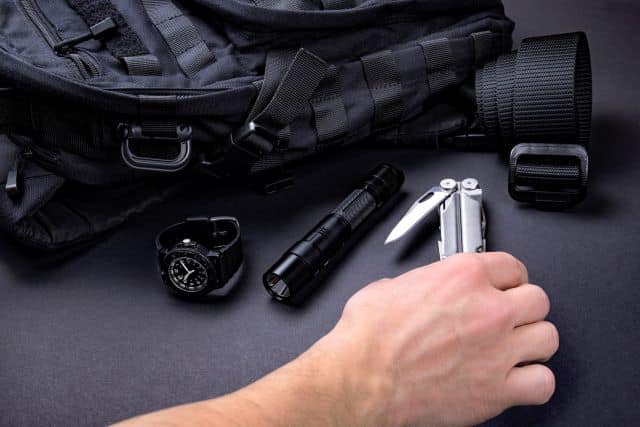
Luxury Items
These are not shooting-related but may make your trip to the range more pleasant and more productive.
- Camera
- Folding chair
- Lip balm
- Wet-weather gear
- An extra hat
- Hand sanitizer
- Other personal hygiene items
Organize Your Bag
A clean bag in good condition is necessary for organizing a range bag.
Store ammo, targets, and tape in the large, central pocket. Put magazines in the magazine bands. Earplugs, extra batteries, and other small items belong in small pockets. Earmuffs will need larger pockets. If there are enough pockets, put tools in them. If not, put them in a small box (or boxes) and store them in the large pocket with your ammo.
Avoid duplicates. How many pairs of goggles or sets of earmuffs do you need?
Label everything. Put your name, contact information, and emergency contact on your range bag. A luggage tag attached to a zipper is simple and will survive wet weather (permanent marker may not). Use a marker to write your name or initials on magazines, earmuffs, ammo boxes, and other equipment.
Keep a checklist in your bag. Use it when you load your bag and when you leave the range. You’ll know what you have, what’s missing (if anything), and what you need to replace. You won’t need to empty and reload the bag every time.
Organize things within your bag. If there aren’t enough pockets for all small items, use plastic bags to keep loose objects from scattering and getting lost. Mark items that you need to repair or replace.
First Aid, first. Keep your E.P.I.K (first aid kit) easily accessible. Maybe attach it with MOLLE straps to the outside of the bag.
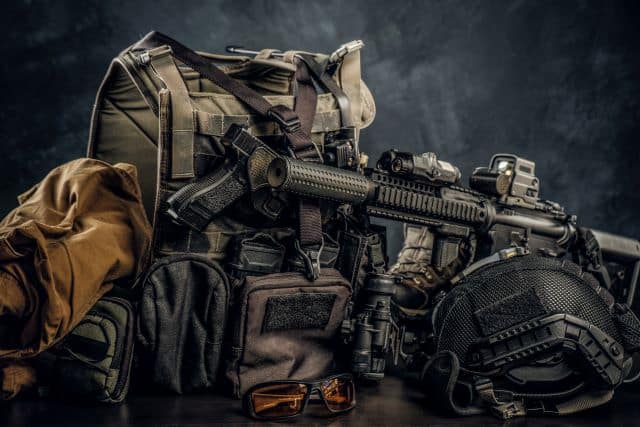
Conclusion
That’s your fundamental DIY range bag. Make it yours! Go big or go home! Modify it to fit your needs, change it as necessary, and keep it ready to go.
Whenever you come to The Range 702, you can be sure we’ll have everything for you for a great shooting range experience, even if you don’t yet have a pro range bag!

